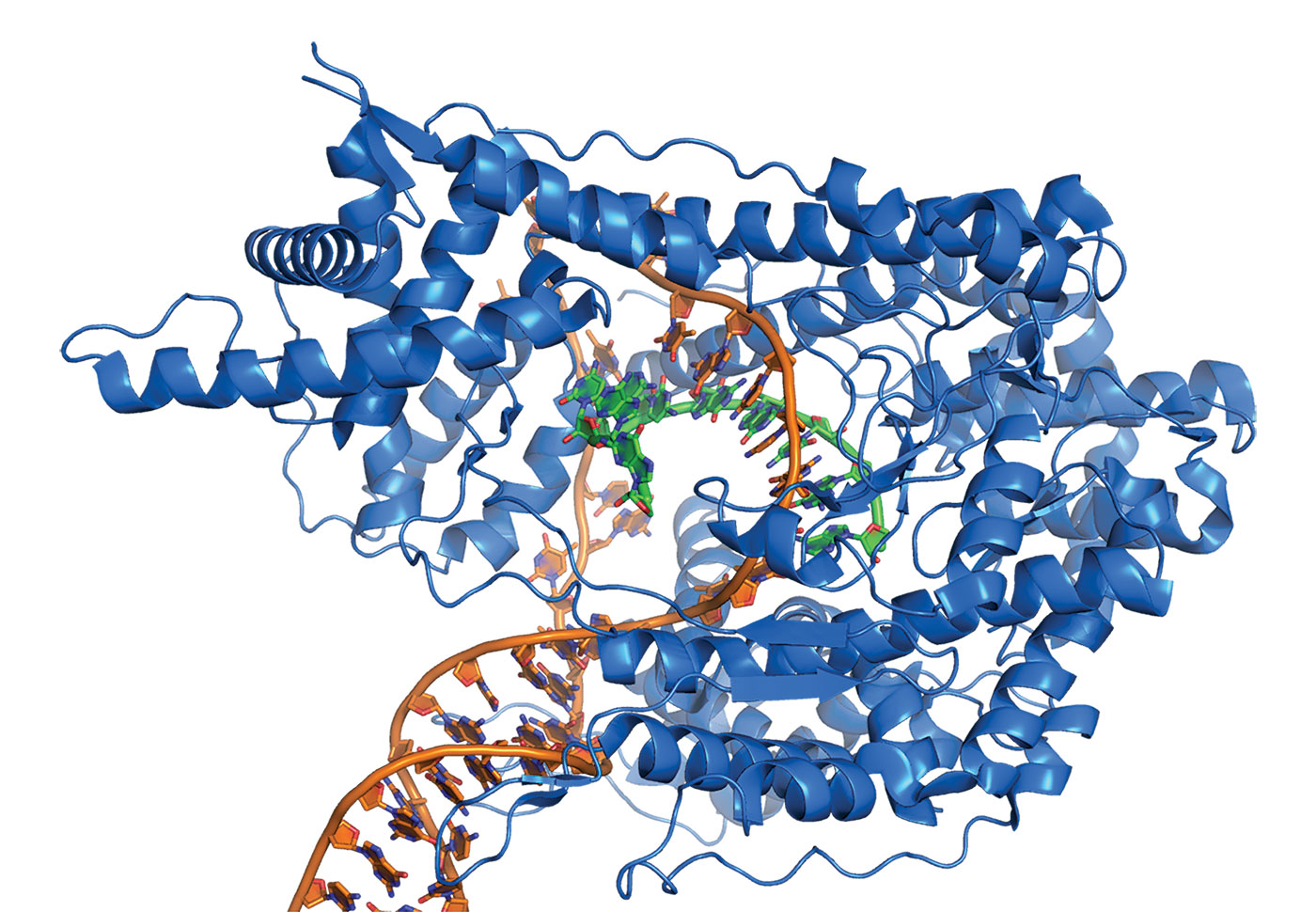Astronomers have detected a likely binary star pair, designated as D9, orbiting the supermassive black hole Sag A* at the center of our Milky Way galaxy.1,2 As the name implies, a binary consists of two stars bound by gravity orbiting around their common center of mass. Based on uniformitarian assumptions and the presence of gas and dust around the binary pair, astronomers concluded the binary has an age of “just” 2.7 million years, the “blink of a cosmic eye” by long-age reckoning.1
Even though astronomers have long believed that stars (and their associated planets) could not form so close to a supermassive black hole,1 Big Bang astronomers concluded that D9 formed near Sag A*:
The fact that these binary stars so near Sag A* have survived the tremendous gravity of this black hole indicates that these environments may actually be stable enough to allow for the birth of planets, the scientists behind the discovery say. “Black holes are not as destructive as we thought,” research lead author and University of Cologne scientist Florian Peiβker said in a statement.1
But this sounds like wishful thinking. The intense radiation and enormous gravity near a supermassive black hole have long been thought to make them “unlikely” candidates for supposed “stellar nurseries.”3 Astronomers have observed stars in the process of being torn apart by nearby black holes.4,5 So regions close to a black hole are not stable, and this discovery does nothing to change that. Granted, D9 is thought to be at a relatively “safe” distance from Sag A*,2 but it is still difficult to see, in general, how stars and planets could slowly and gradually form near the galactic center.
Of course, there is another possibility. Perhaps God supernaturally created D9 near Sag A* not that long ago, and insufficient time has elapsed, despite the extreme environment at the galactic center, for the binary pair to merge or be disrupted by tidal forces.
Moreover, despite the extreme environment near Sag A*, uniformitarian astronomers predicted many more binaries should exist there, yet this is the first detected.2 Why are these binaries apparently rarer than expected? What if the orbits of the binaries are decaying much faster than Big Bang astronomers expect, so that binary pairs are merging into single stars that look like massive “young” hot, blue stars? This might help explain other apparently “young” hot blue stars near Sag A* whose existences perplex conventional astronomers.6 Something like this is already thought to occur with at least some “blue straggler” stars in globular clusters.7–9 And both creation and conventional astronomers have observed orbits of some binary pairs decaying tens to thousands of times faster than expected based on uniformitarian theory.10–12 Finally, the very existence of supermassive black holes is very difficult for Big Bang astronomers and astrophysicists to explain, especially those in very distant galaxies.13
Evidence of youth is super-abundant within our solar system,14 but some deep-space objects seem to present stronger arguments for deep time. But what is often not appreciated is that deep-space objects can present serious challenges for Big Bang theorists, as well.15
References
- Lea, R. Astronomers Discover 1st Binary Stars Orbiting Supermassive Black Hole at the Center of the Milky Way. Space.com. Posted on space.com December 17, 2024, accessed December 17, 2024.
- Peiβker, F. et al. 2024. A Binary System in the S Cluster Close to the Supermassive Black Hole Sagittarius A*. Preprint. Nature Communications.
- Mata, D. Astronomers Study an Unlikely Stellar Fountain of Youth. Astronomy. Posted on astronomy.com December 14, 2023, accessed December 18, 2024.
- Lea, R. Massive Star’s Gory ‘Death by Black Hole’ Is the Biggest and Brightest of Its Kind. Space.com. Posted on space.com August 12, 2024, accessed December 17, 2024.
- Lea, R. Black Hole Announces Itself to Astronomers by Violently Ripping Apart a Star. Space.com. Posted on space.com November 10, 2022, accessed December 17, 2024.
- Hebert, J. Stars Defy Big Bang. Creation Science Update. Posted on ICR.org July 14, 2022, accessed December 17, 2024.
- “Blue straggler” stars are blue stars in globular clusters that shouldn’t exist by old-age reckoning. However, at least some blue stragglers can be explained by the “merger” of two other stars, either by collision or by accretion of one star onto the other. However, conventional astronomers have noted that these mechanisms may not explain the existence of all blue stragglers. Hence, at least some blue stragglers may still be a valid argument for relative youth. See references 8 and 9 below.
- Globular cluster. Encyclopaedia Britannica. Britannica.com/science/globular-cluster, accessed December 18, 2024.
- Kohler, S. Exploring a Cluster’s Stragglers. AAS Nova. Posted on aasnova.org February 26, 2020, accessed December 18, 2024.
- Tian, Y. et al. 2009. Period Change and Possible Magnetic Braking in WY Cancri. Publications of the Astronomical Society of Japan. 61 (4): 675–677.
- Samec, R. G. 2020. Magnetic Orbital Decay of Solar-Type Binaries and Creation Implications. Creation Research Society Quarterly. 57 (1): 84–97.
- Samec, R. 2016. The Apparent Age of the Time-Dilated Universe II: Gyrochronology, Magnetic Orbital Decay of Close Solar-Type Binaries and Errata. Creation Research Society Quarterly. 53 (1): 42–57.
- Irving, M. Most Distant Black Hole Discovered, But It’s “Impossibly Massive.” New Atlas. Posted on newatlas.com January 23, 2024, accessed December 17, 2024.
- Hebert, J. 2018. Our Young Solar System. Acts & Facts. 47 (9): 10–13.
- Hebert, J. 2019. Deep-Space Objects are Young. Acts & Facts. 48 (9): 21.
* Dr. Jake Hebert is a research associate at the Institute for Creation Research and earned his Ph.D. in physics from the University of Texas at Dallas.






















